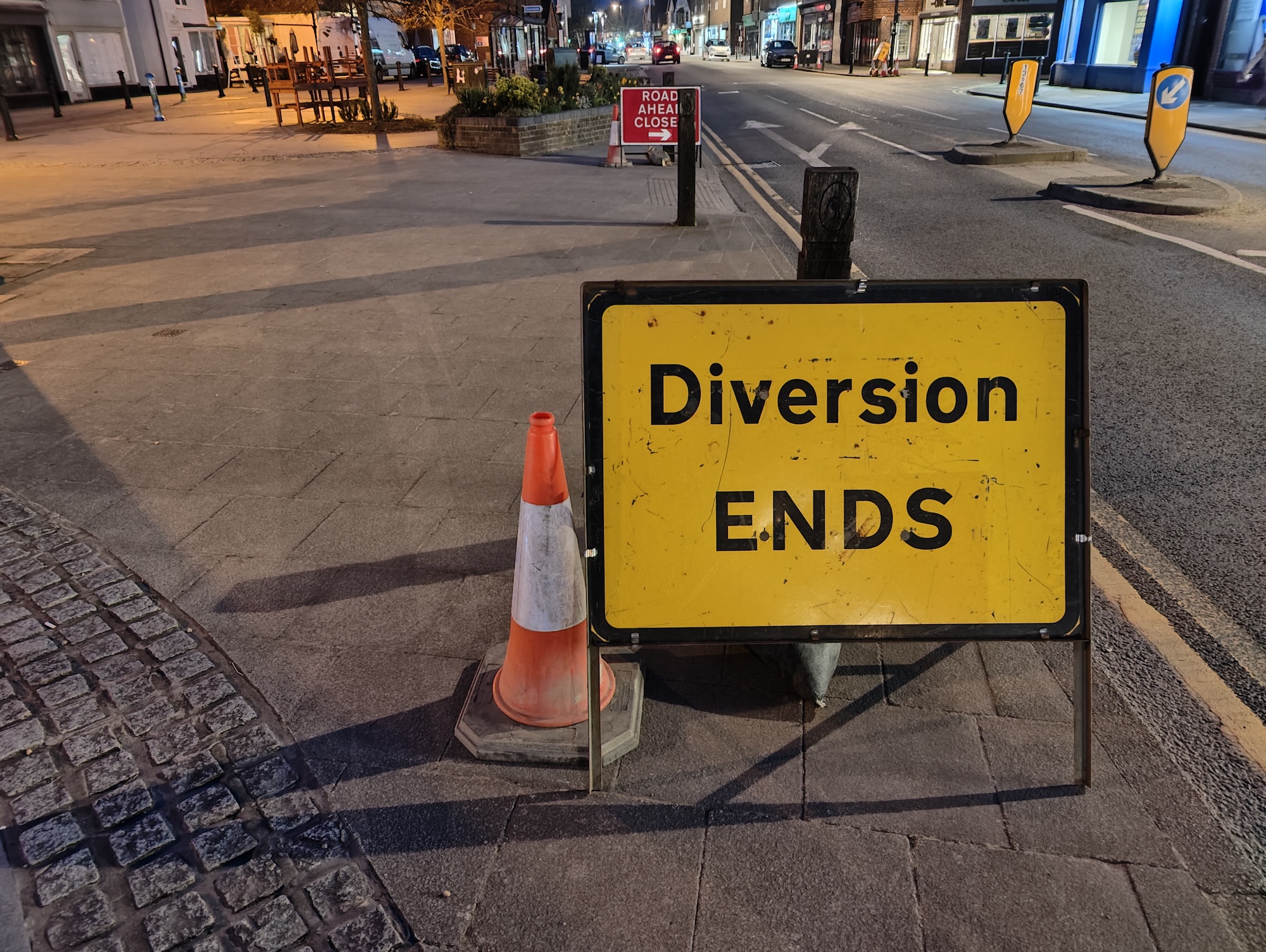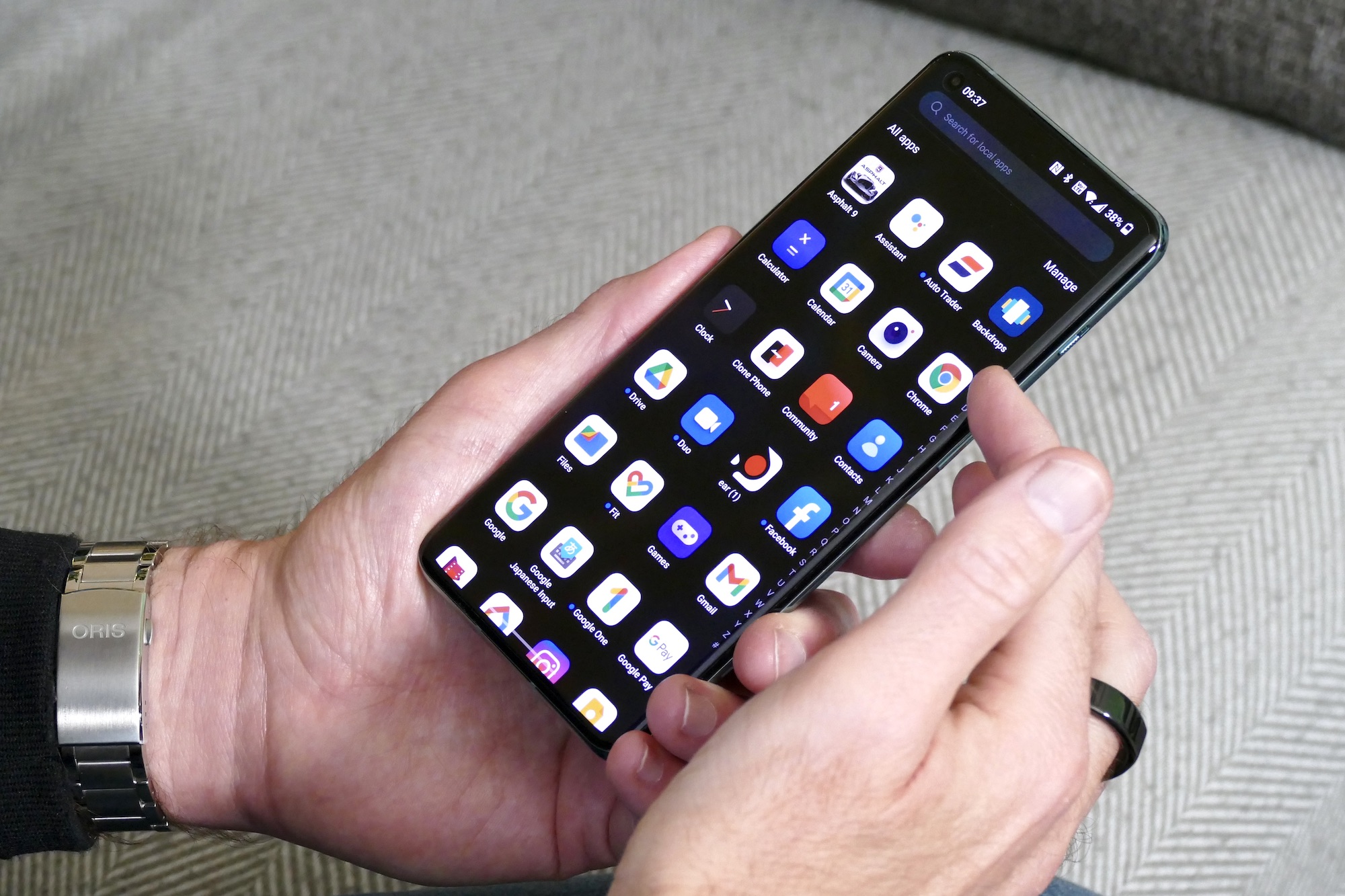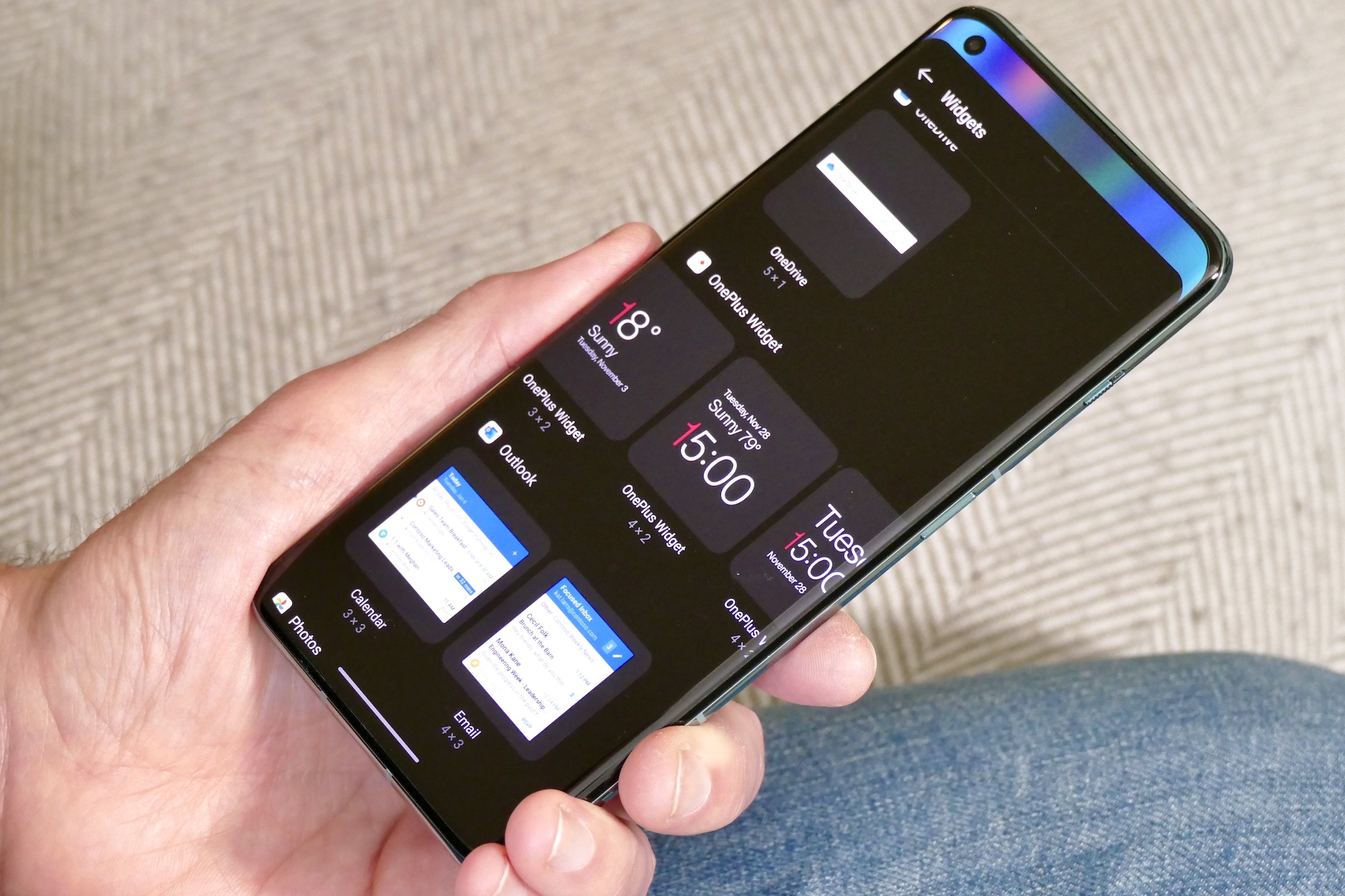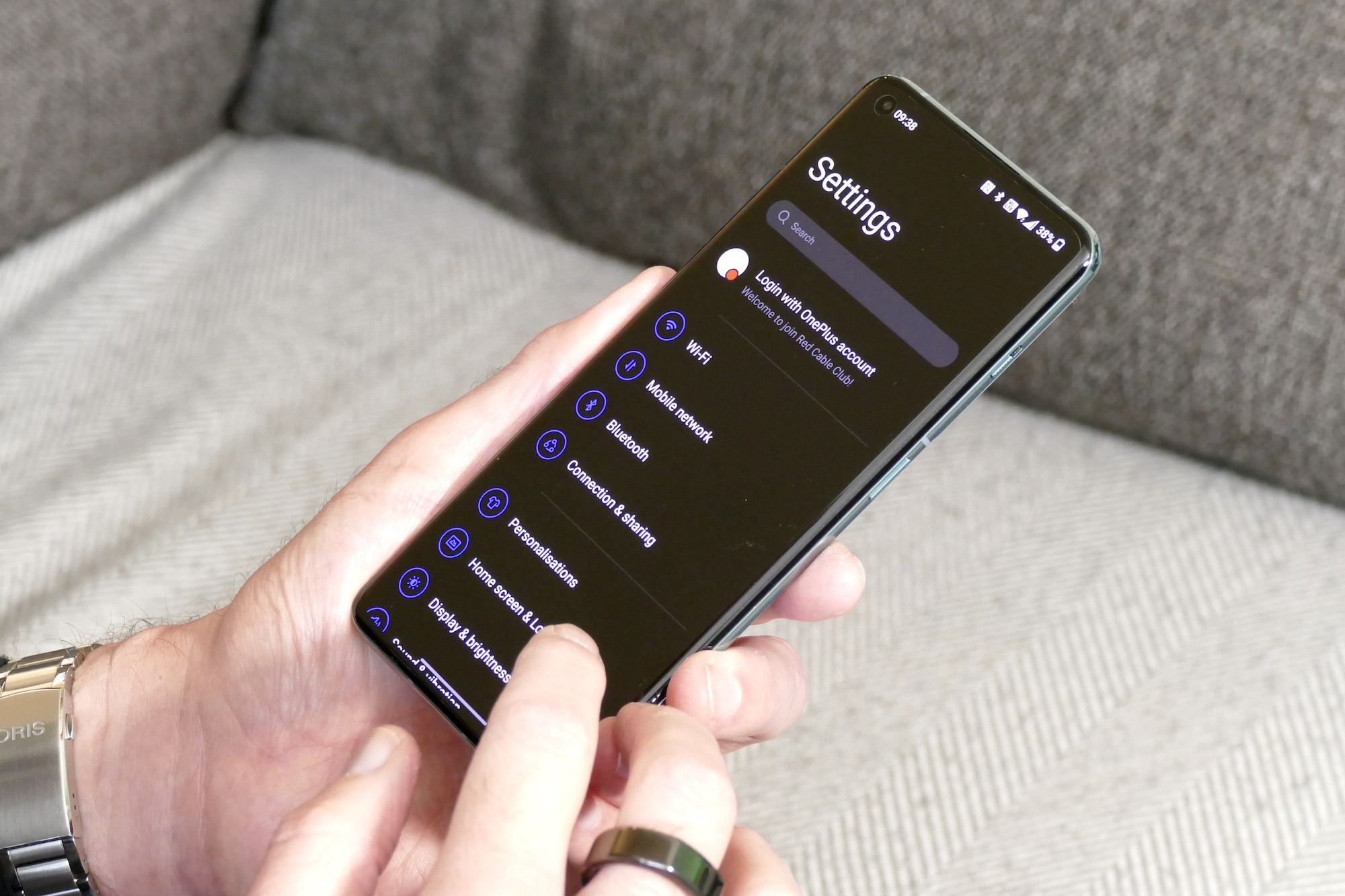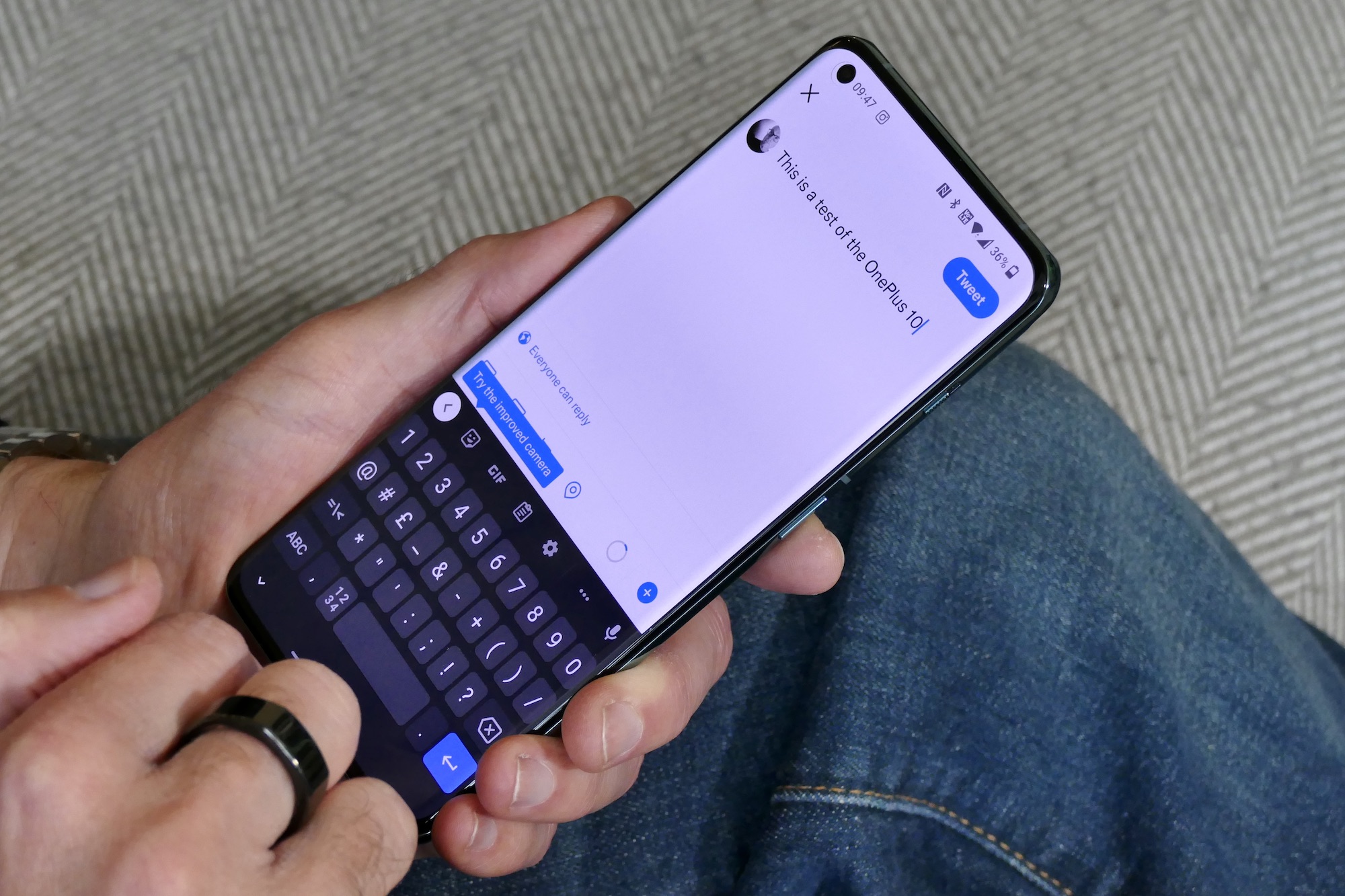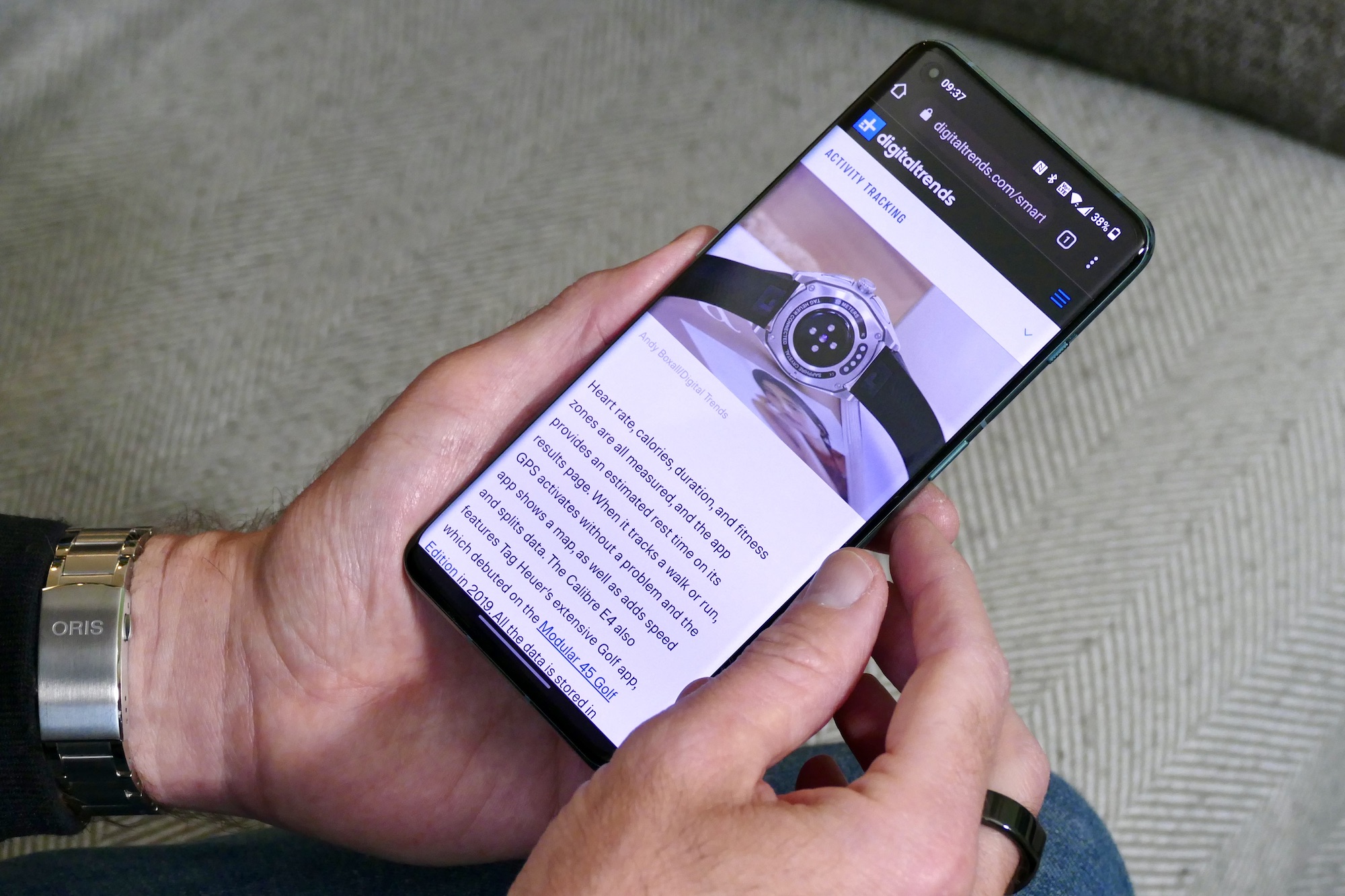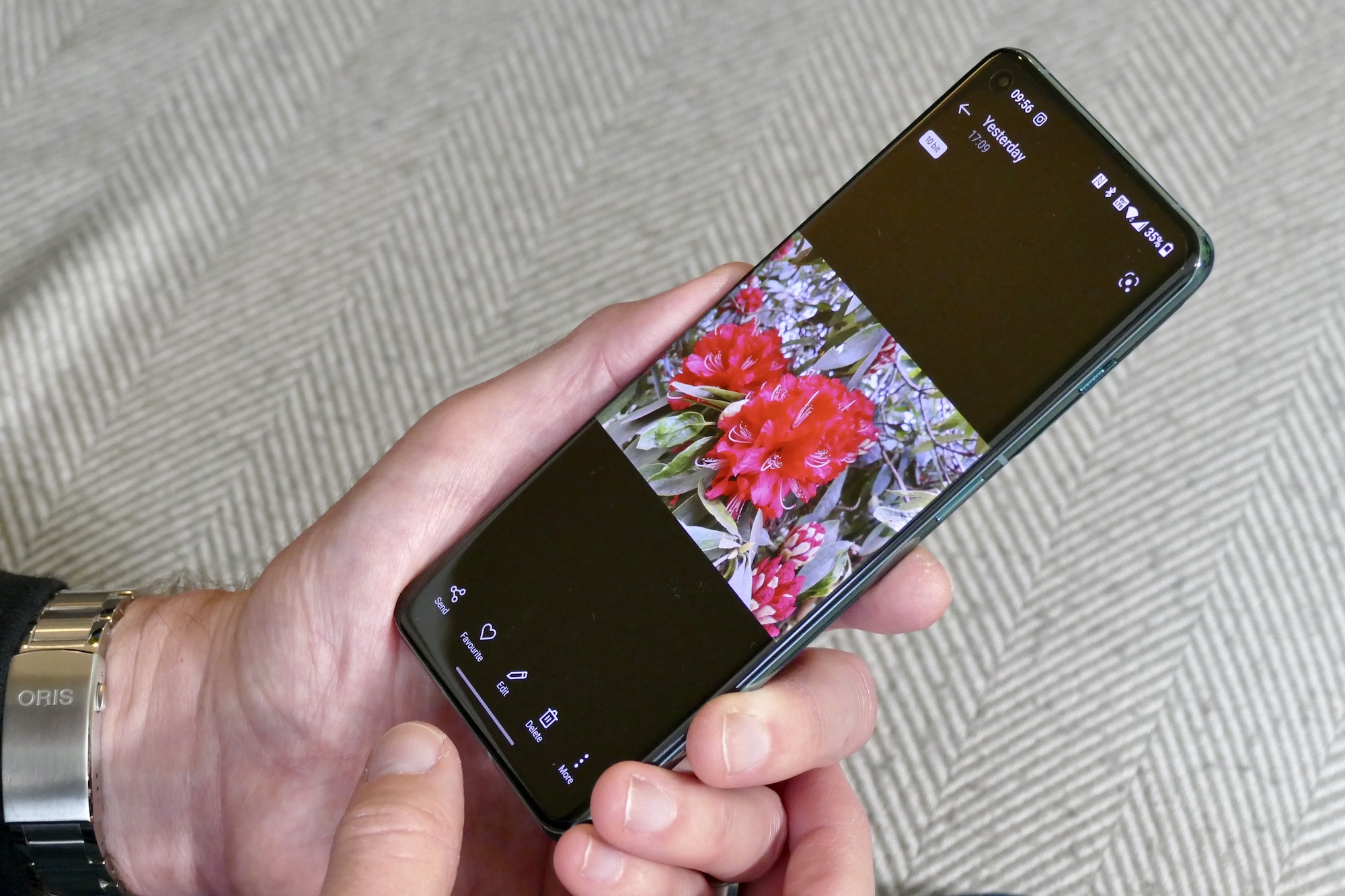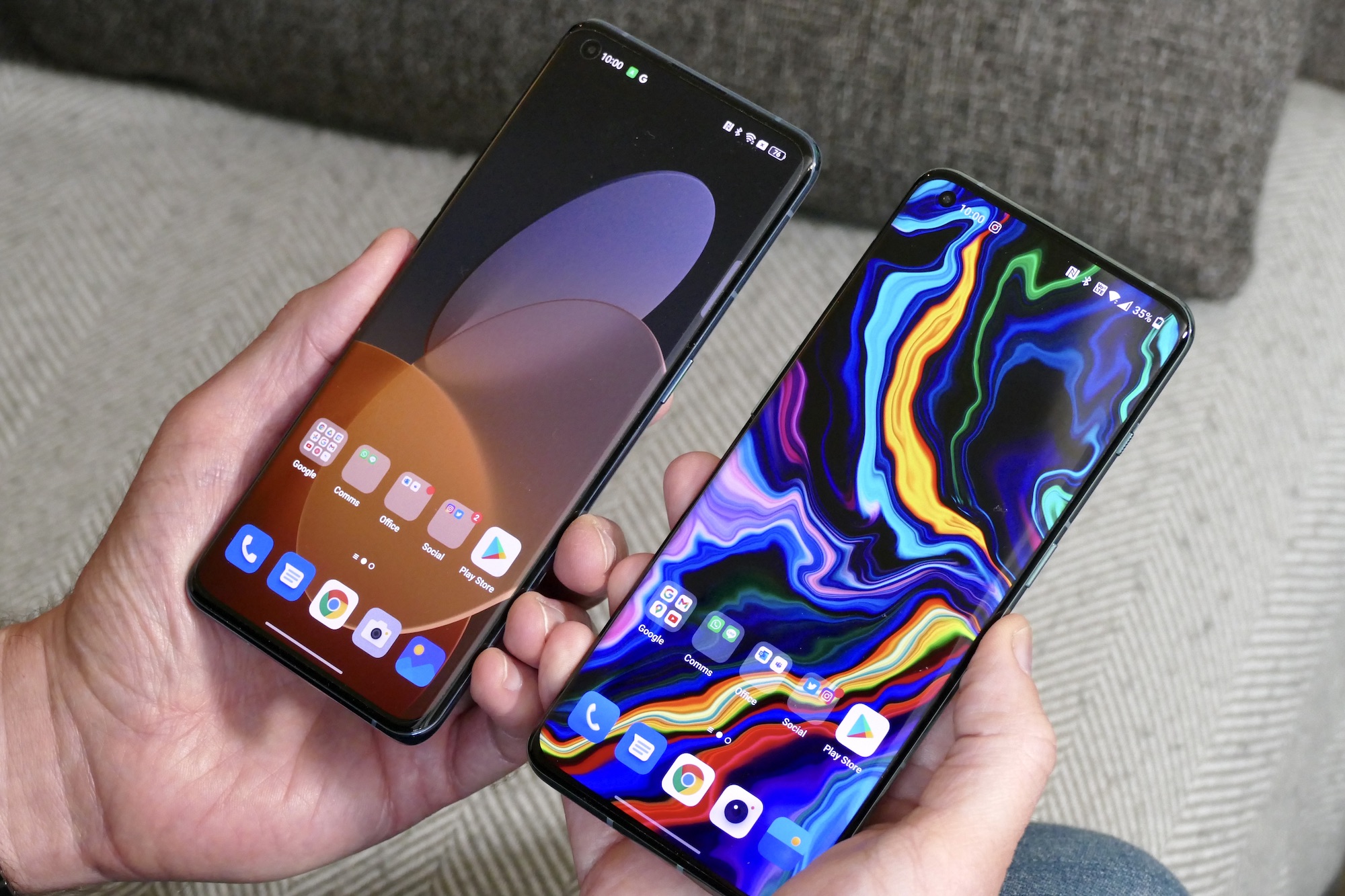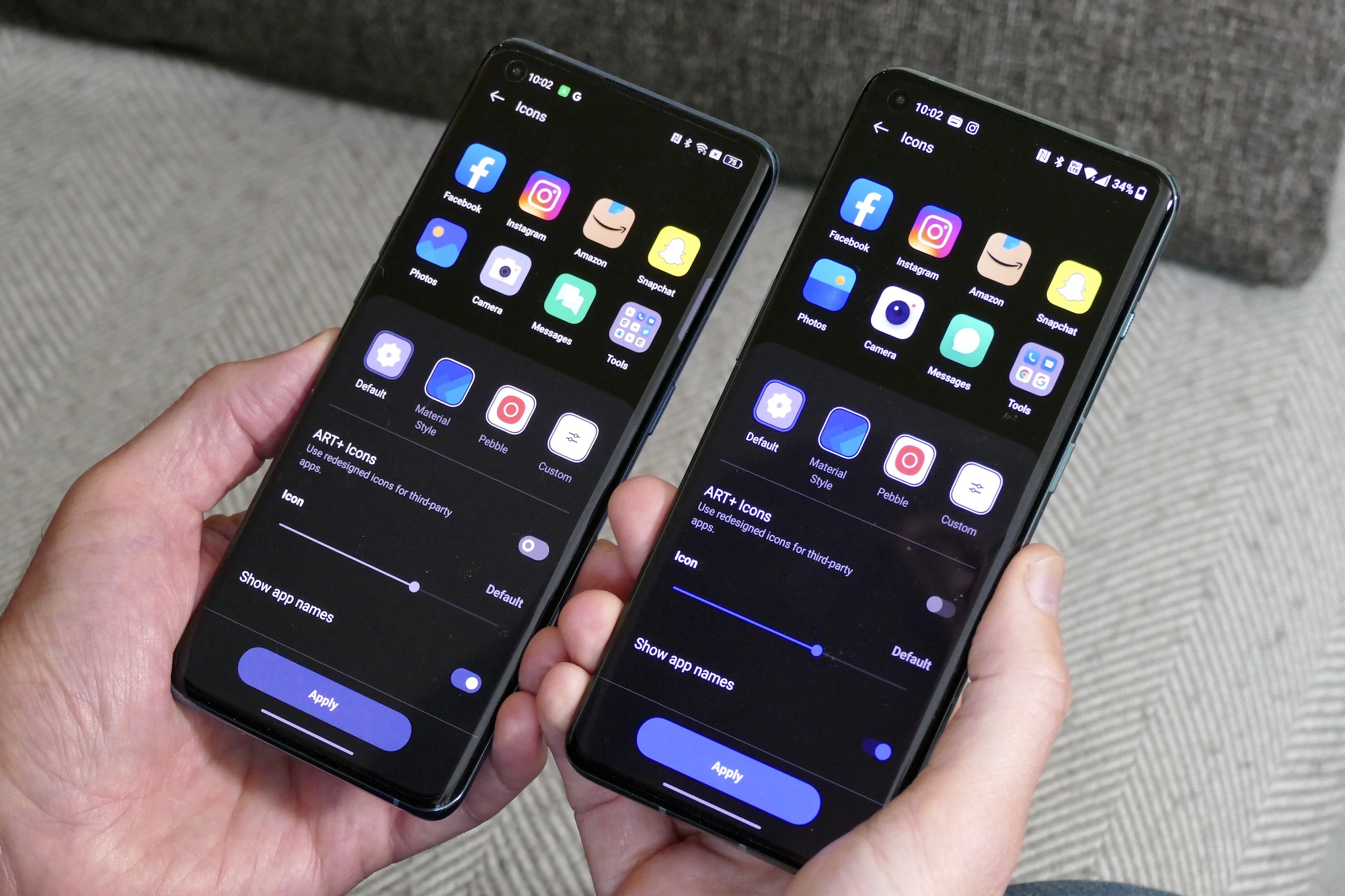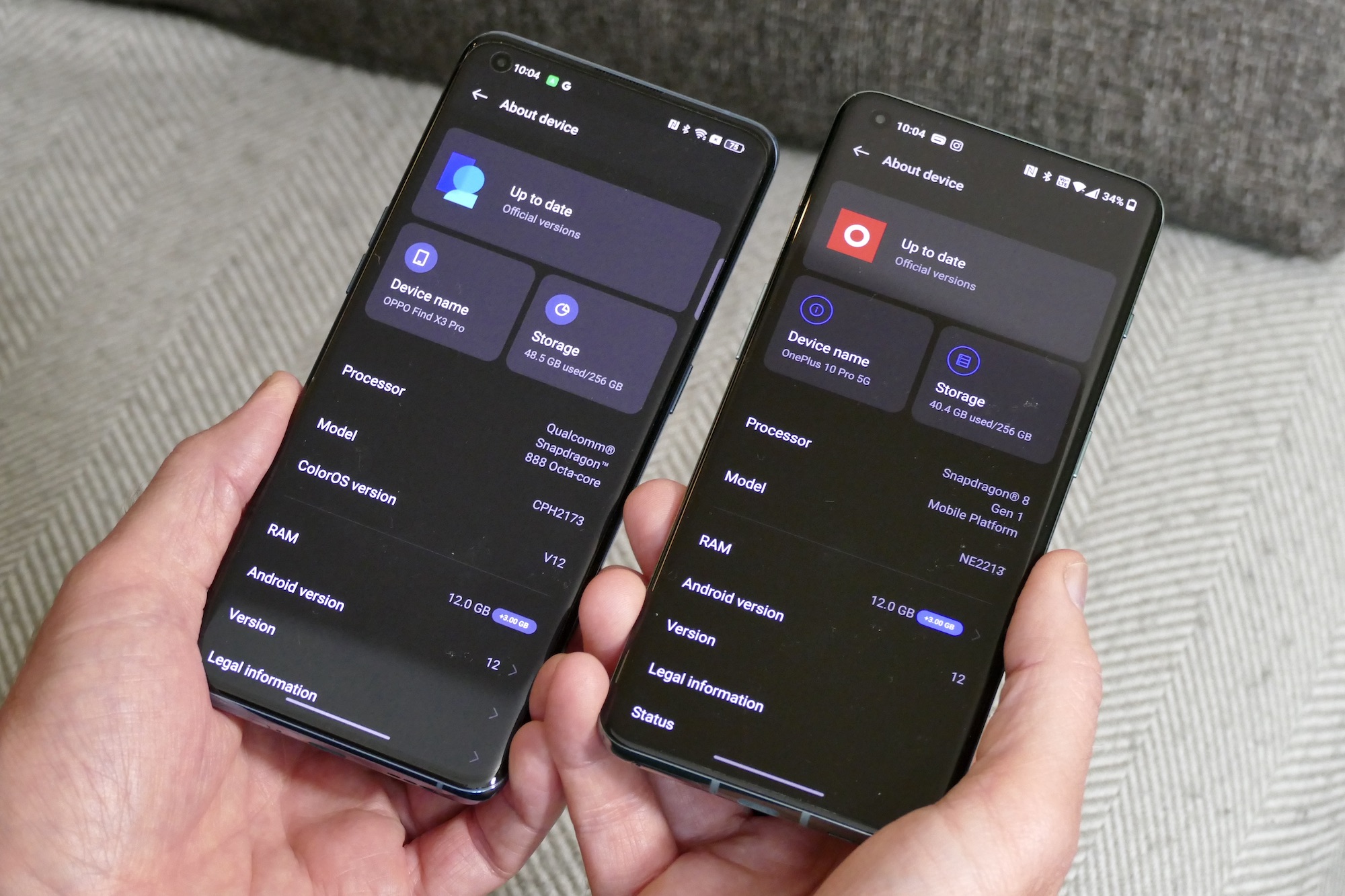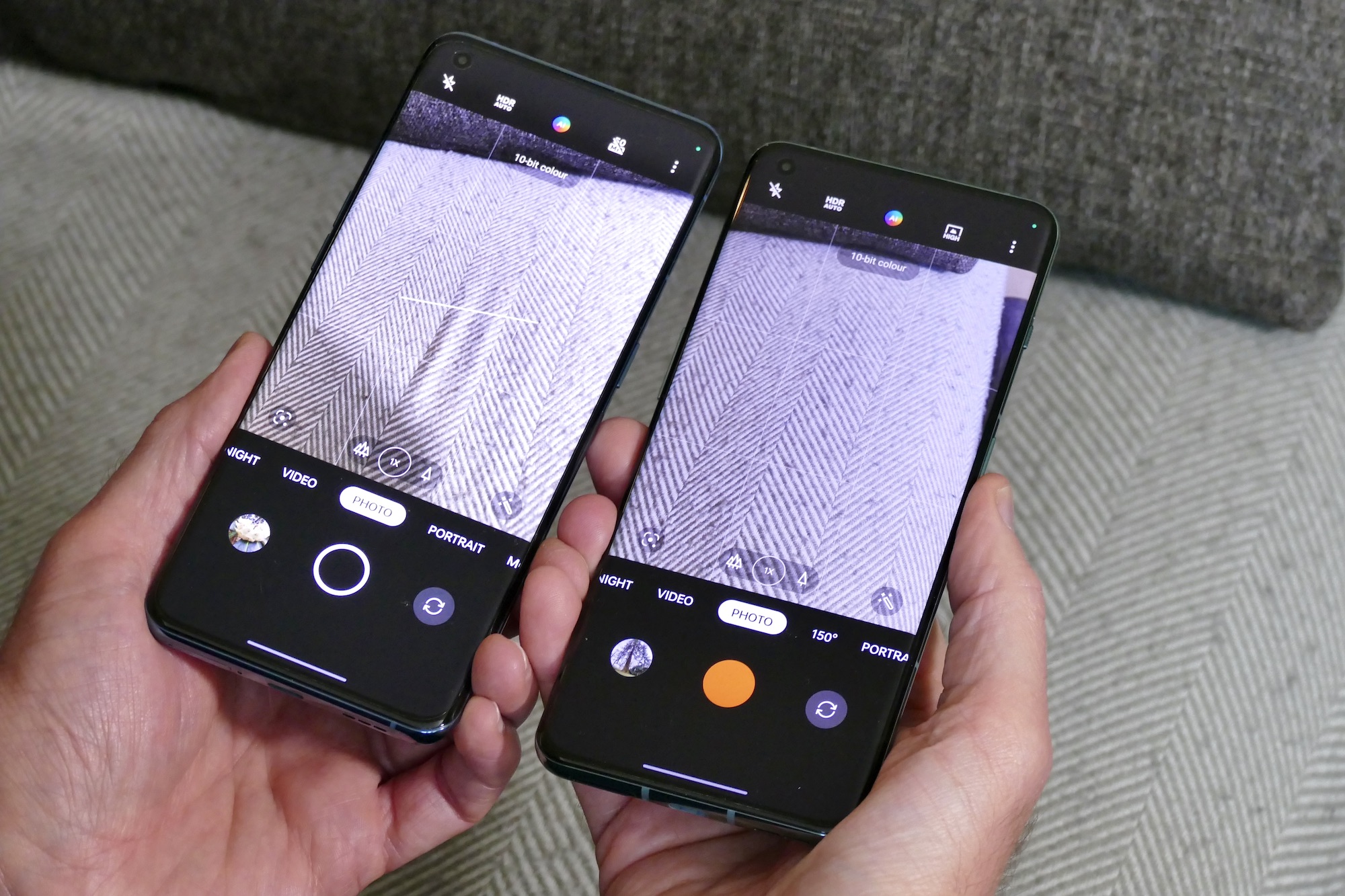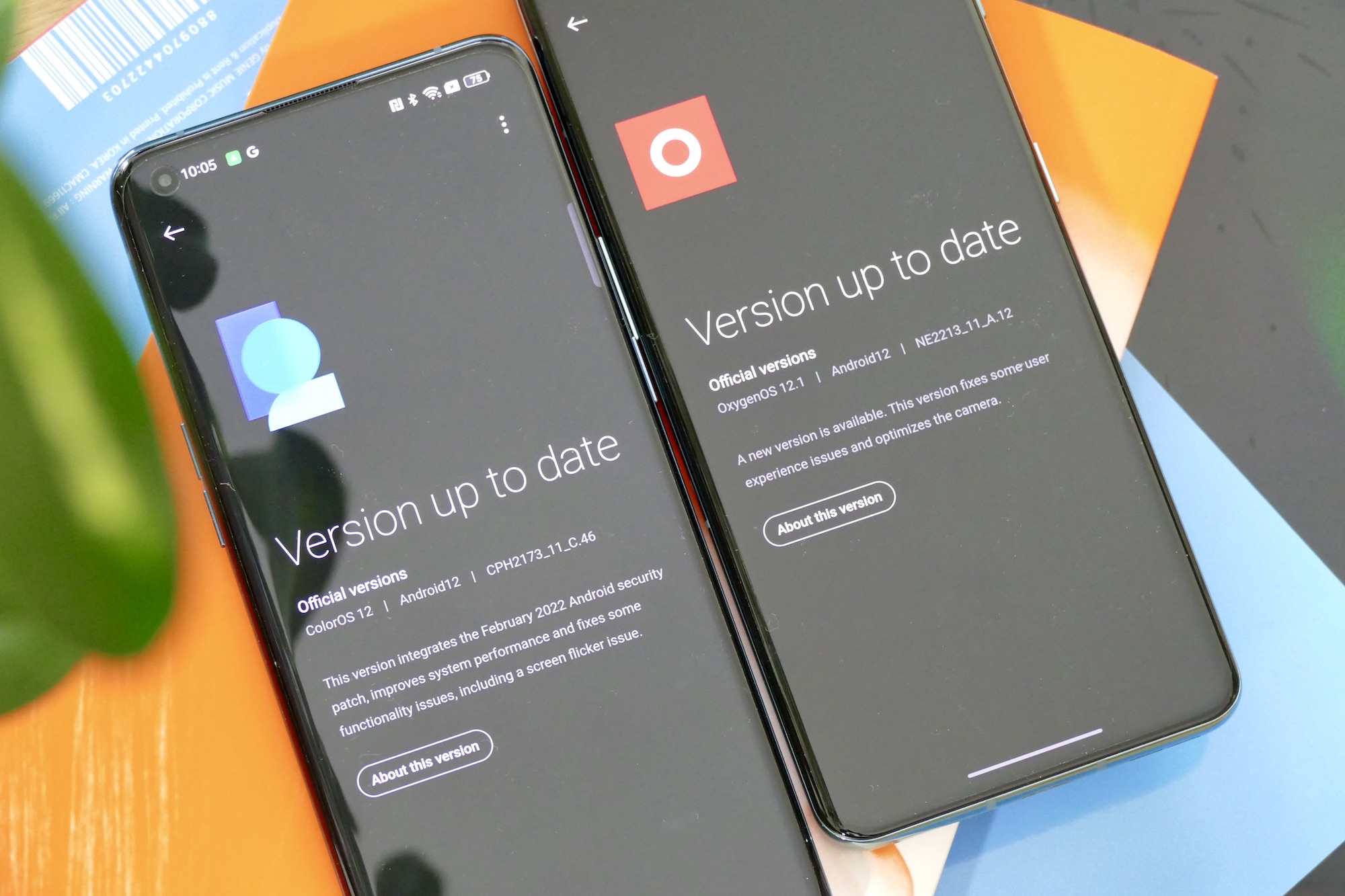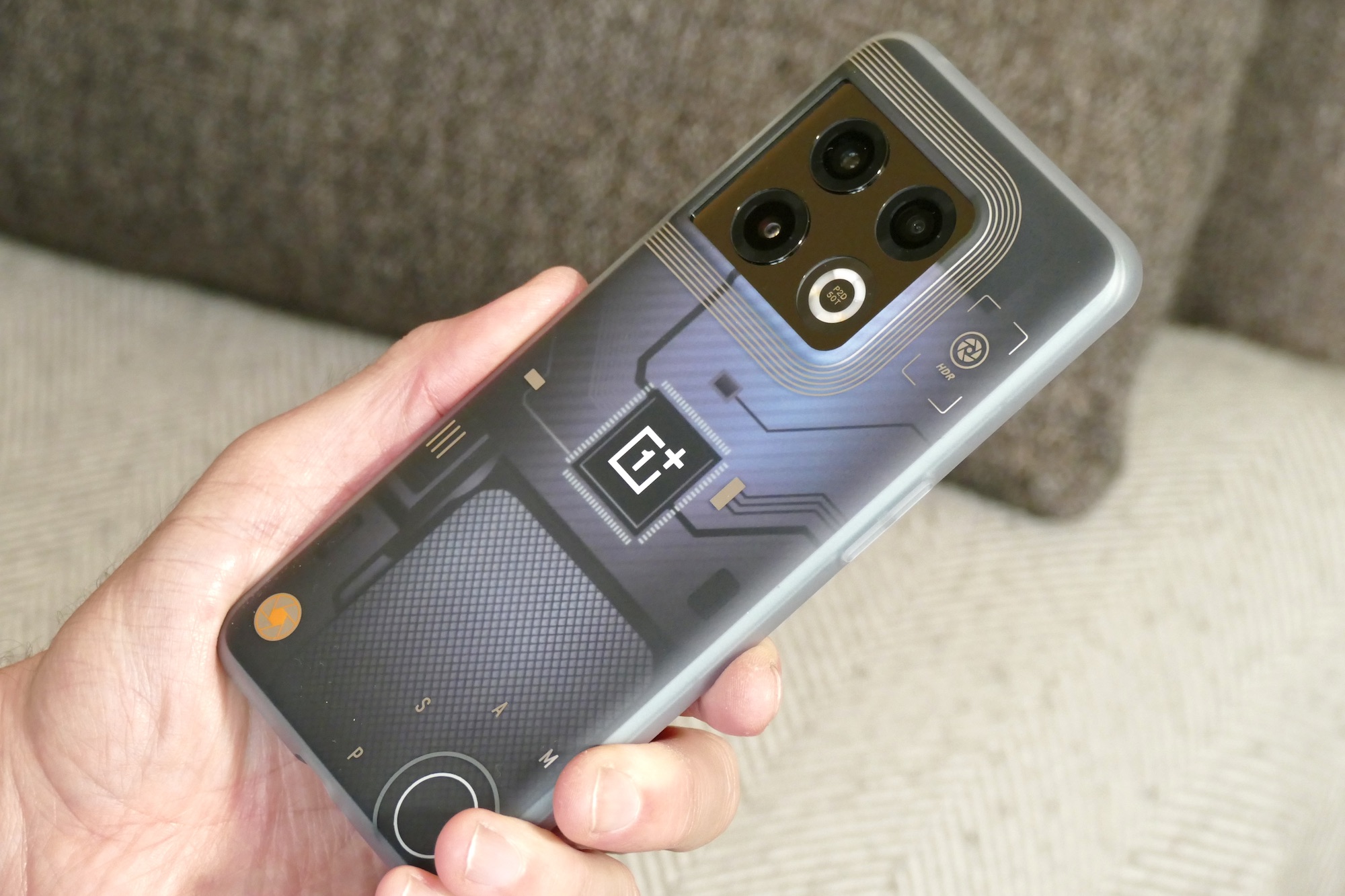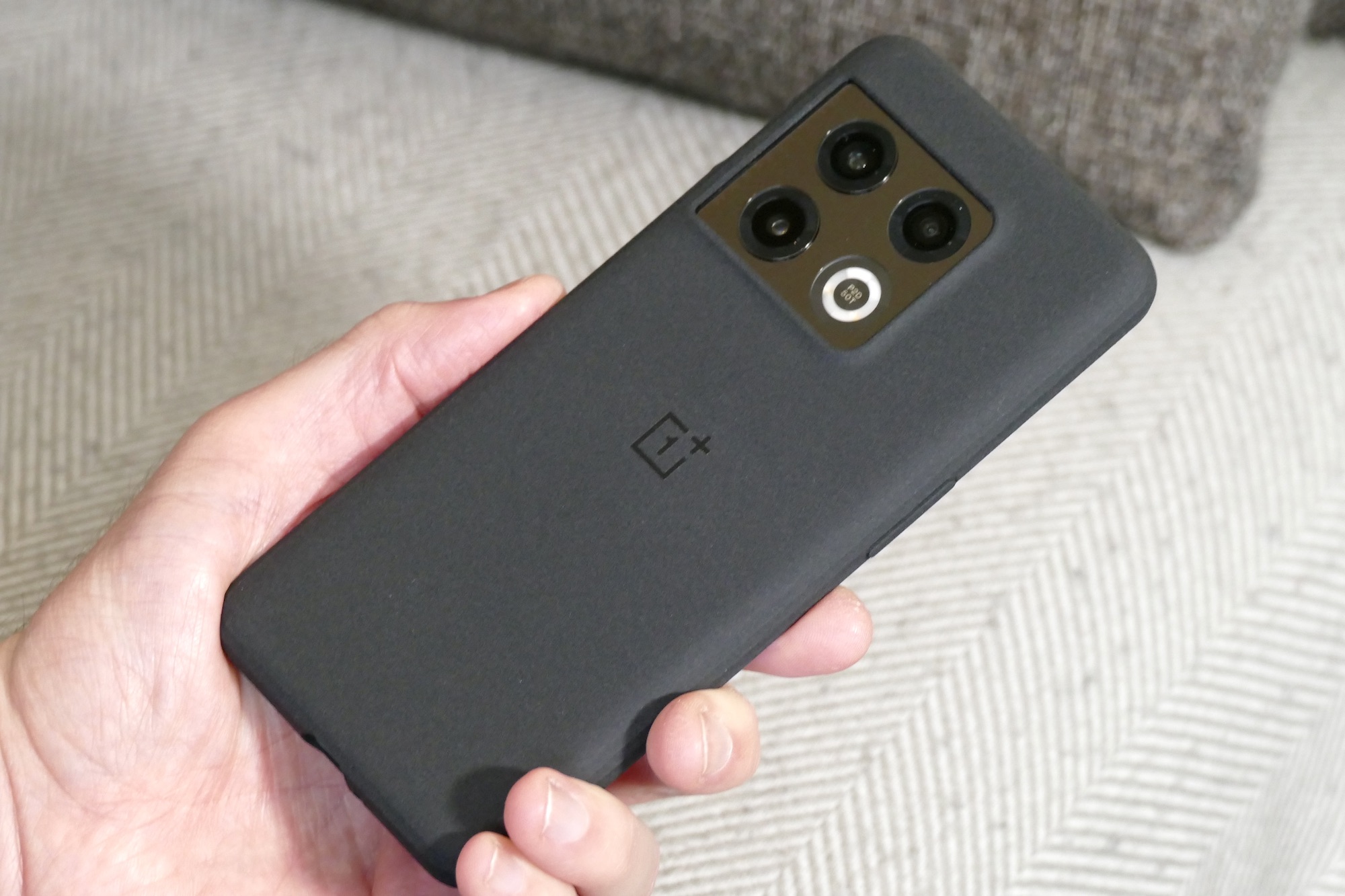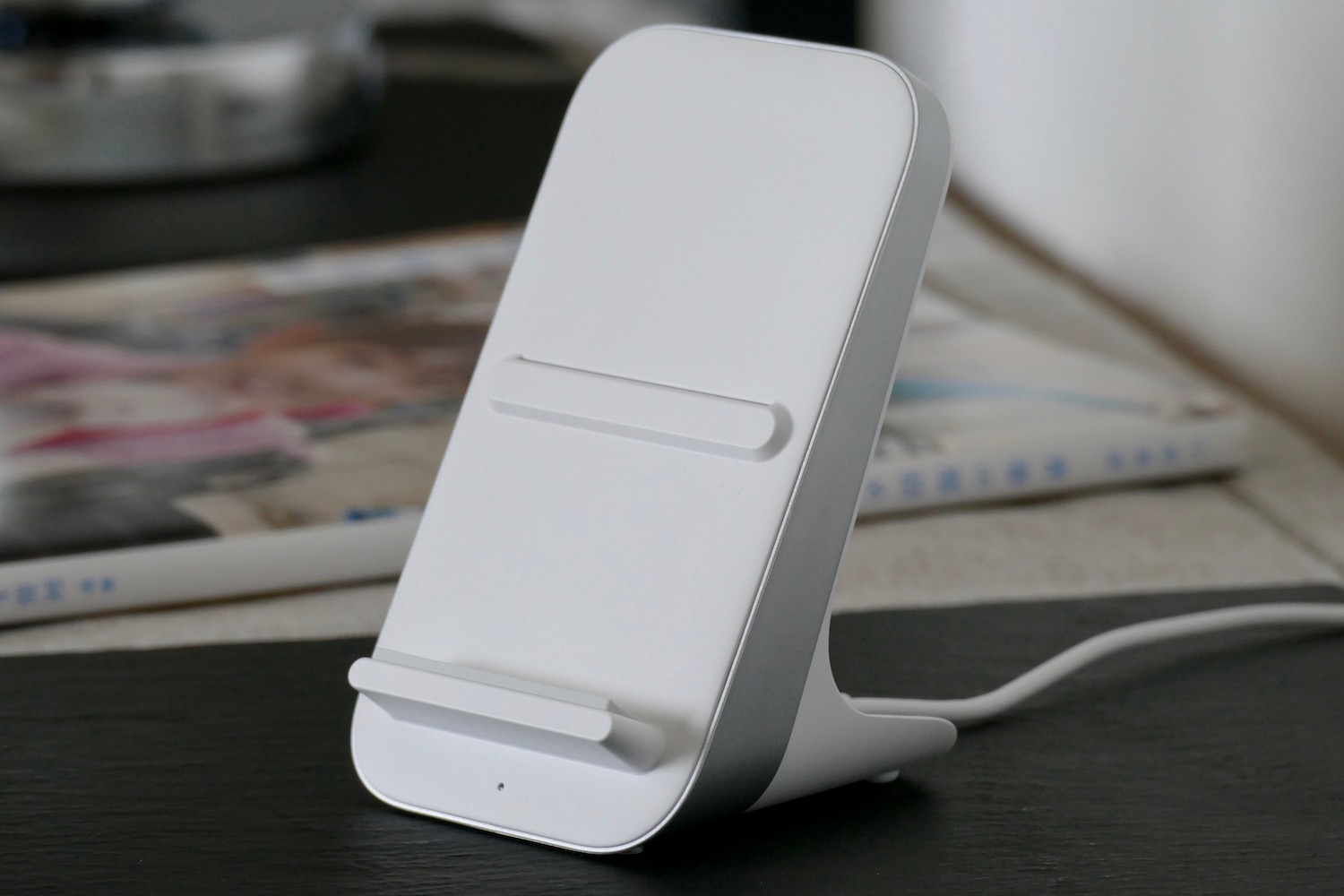“The OnePlus 10 Pro's pretty design, high specification, decent camera, and fast charging make it worth the money, but it's let down by the software.”
- Attractive and well made
- Interesting camera features
- Fast battery charging
- Bright and colorful AMOLED screen
- Unreliable software
- No water resistance
The OnePlus 10 Pro is different from all the OnePlus phones that have come before it, as it’s the first flagship phone to launch since OnePlus and Oppo took their relationship to the next level and moved in together. We’ve been waiting patiently for the OnePlus 10 Pro’s global release to come — is this another hit to follow the almost across-the-board brilliance of the OnePlus 8 Pro and OnePlus 9 Pro? Mostly, yes, but there have been some changes.
Design
In your hand, you won’t notice any size difference between the OnePlus 10 Pro and the OnePlus 9 Pro, and they’re both practically the same weight too. At 8.6mm thick and 200 grams, the 10 Pro has a chunky, confidence-inspiring feel to it, as the phone’s dimensions reflect the excellent build quality and materials used. Gorilla Glass Victus covers the screen, Gorilla Glass 5 is on the back, and it’s all attached to a metal chassis.
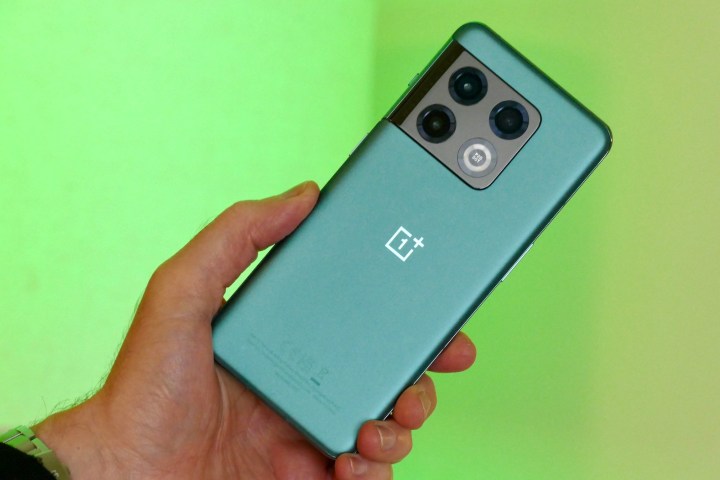
It’s the Emerald Forest color you see in most of our photos — there’s also a Volcanic Black color if you’re not so outgoing — and it’s beautiful. The frosted finish provides grip and is mostly resistant to fingerprints, while the shade of green chosen is light and subtle. The color has been carried over to the metal chassis and contrasts perfectly with the large, black, reflective camera module. Much like the Galaxy S21 Ultra, it’s part of the chassis, and because it extends over more than half the phone’s width, it makes a serious statement.
Hasselblad branding is engraved into the ceramic camera module, there’s a OnePlus logo in the center of the body, and all the ugly legal text that blighted the Oppo Find X5 Pro has been cleverly obfuscated at the bottom of the phone. OnePlus’s handy Alert Slider is on the side to change between Silent, Vibrate, and Ring modes. Until you actually use the Alert Slider, you may not fully realize how handy it is. It’s a physical version of Apple’s Focus mode in iOS, and I use it on a daily basis. There’s some lovely haptic feedback when you slide between modes too.

A welcome change over the OnePlus 9 Pro is the fingerprint sensor is now higher up on the screen, making it easier and more natural to quickly locate. It’s another piece of the great overall design that makes the OnePlus 10 Pro a pleasant phone to own and use, just like the decision to keep it to 200 grams makes it pocket-friendly and never fatiguing to hold. It’s just unfortunate OnePlus hasn’t added an IP68 water resistance rating, and the all-glass body is at risk if you’re a bit clumsy, so you may want to put it in a case.
The OnePlus 10 Pro’s design is a big step forward over the OnePlus 9 Pro. It may be basically the same size and shape, but the camera module design and implementation give it a recognizable character, and the Emerald Forest color makes it pop when you put the phone down.
Camera
Hasselblad is back for the OnePlus 10 Pro, lending its expertise in the form of the second generation Hasselblad Camera for Mobile software. On the hardware side are a 48-megapixel main camera, a 50MP wide-angle camera with a 110-degree field of view, and an 8MP telephoto for a 3.3x optical zoom. There’s also a special 150-degree wide-angle camera mode.

There are several areas where Hasselblad’s features can be found. For instance, Hasselblad has enhanced the RAW mode to create the RAW+ mode, where over and under-exposed images are generated to create a new RAW image that’s editable in the phone’s Gallery app. It has worked to help the camera capture natural colors, which also leans on the camera’s ability to shoot 10-bit color images. There are a few new filters created by Hasselblad Master photographers too.
I really like the photos the main camera takes. Hasselblad’s big claim is working on the way the camera reproduces colors, but thankfully it doesn’t shun HDR or high saturation in pursuit of a natural (read: drab) palette, preferring to masterfully balance the effect of HDR and vibrant colors for attractive photos that never lack pop. That said, it’s not easy to pinpoint Hasselblad’s involvement in the camera, which makes it hard to judge how much difference it’s making.
Unfortunately, consistency across the other cameras isn’t great. The gallery above shows a 150-degree photo, a wide-angle shot, a main camera shot, and then a 3.3x zoom photo. The 150-degree photo is bright and vibrant but contains a fair amount of noise, while the wide-angle photo removes the noise and lessens the HDR look, but is oddly exposed and lacks some visual pop. The main camera is way better, with a lovely sky, suitably vibrant colors, and plenty of detail in the buildings. Finally, the zoom photo has drab colors and lacks detail.
What else? I had fun with the 150-degree wide-angle mode and its strong HDR effect but missed a macro mode. The 10-bit color photo option is interesting. Shoot in this mode and photos are saved as HEIC files, not JPEG, and to get the true benefit you need to view them on either the phone’s 10-bit color screen or a compatible monitor. However, even on my 8-bit monitor, there was greater definition and less visible banding than in the JPEG version. I also found the photos looked sharper even when zoomed in. It’s a mode that deserves to be explored. However, I didn’t really find the Hasselblad Master filters added anything special to my photos.
Despite the inconsistency in the other cameras, I’ve enjoyed using the OnePlus 10 Pro’s main camera and its 150-degree ultrawide mode. However it has a tough time when compared to other current smartphones. In our test against the iPhone 13 Pro, it was beaten in every category, with the low-megapixel optical zoom being one of the main areas where it lost out.
The OnePlus 9 Pro needed a few updates before the camera reached its best, and there’s a good chance it’ll be the same with the OnePlus 10 Pro. The majority of the photos in the galleries here were taken before a software update arrived promising camera optimizations. So far, photos do look brighter and more colorful than before, with better overall balance, and some of the odd exposure issues appear to have been fixed too. We’ll continue testing, but early impressions are good and indicate OnePlus has already started to improve consistency.
Performance
The top OnePlus 10 Pro has 12GB RAM and 256GB storage space to go along with the Qualcomm Snapdragon 8 Gen 1 processor. There’s also an 8GB/128GB model only in Volcanic Black if you prefer to save some money. Unsurprisingly, it’s an absolute rocket. Asphalt 9: Legends plays faultlessly, and is astonishingly fast and smooth. The phone is comfortable to hold in landscape, and there’s some advanced cooling technology inside the phone to keep it from overheating. Playing for an hour only made the rear panel slightly warm to the touch and that’s all.

I initially experienced some Wi-Fi connection problems, where despite registering a full Wi-Fi signal, it would intermittently fail to maintain a fast connection. This was ahead of the phone’s official announcement, but a software update arrived right before the embargo lifted and included a note that Wi-Fi would be improved. It has cleared up the issue. Throughout my time with the phone, I have not had any issues with the reception, regardless of band.
Software
What software is installed? It’s apparently OxygenOS 12.1, but to my eyes, it looks like Oppo’s ColorOS apart from OnePlus’s familiar font and some unique styling choices, such as the red and white color combination for some menus. The two come from the same codebase and, initially, it seemed they would merge to become one, but OnePlus backtracked saying they would remain distinct from each other. Sadly there’s no real evidence of that here, and it’s not good news at all.
Calling features by a different name and vaguely changing some icons don’t count as “distinct” differences. Just because OxygenOS has its Canvas always-on screen style but it’s called Portrait Silhouette in ColorOS doesn’t make them different. Slightly altering the layout of Quick Settings fools no one, and neither does giving the option of OnePlusSans font in OxygenOS or OppoSans font in ColorOS. Even the system sounds and haptic alerts are the same.
All the annoyances of ColorOS 12 on the Find X5 Pro are also now part of OxygenOS. The mass “agree to this, agree to that” interruptions, the hardcore power management, the barrage of customizations whenever you try to make a feature more usable, spreading app icons across the home screen even when you choose the Drawer layout at setup, and the unfortunate unreliability is all there. WhatsApp and Line constantly ignore incoming messages, for example, and an old message shows as the always-on screen notification on the arrival of a new email.
Is it all bad? I like the larger icons showing inside folders, and that it’s limited to showing four rather than the nine icons in ColorOS’s folders. The battery percentage showing outside the battery icon is clearer and easier to see at a glance. It’s also fast and smooth and apps load quickly. Even some aspects of the interface are great, such as the large, easy to use option menu that appears when you plug in a USB cable to transfer files. ColorOS isn’t inherently bad, but it is messy, not always logical, often frustrating, and sometimes unreliable. We now have to put up with it on Oppo phones, OnePlus phones, and Realme phones.
Returning to the OnePlus 9 Pro with OxygenOS 11 installed reminded me of what I was missing. It’s lighter and cleaner, uses space more effectively, and is snappier too. No, it’s not vastly different in design, but it seems to work better and more cohesively as a whole. I wish OxygenOS 12 was the same but sadly, in a ColorOS world, OxygenOS has become little more than a collection of widgets.
Screen and audio
The OnePlus 10 Pro’s 6.7-inch AMOLED screen is very similar to the one on the OnePlus 9 Pro. The 3216 x 1440 pixel resolution gives a big 525 pixel-per-inch (ppi) pixel density for absolute sharpness, it shows a billion colors, and has HDR10+ certification. The change comes with the dynamic 120Hz refresh rate. The panel is an LTPO 2.0 AMOLED which enables a faster adjustment of the refresh rate, then applies it to more areas in the operating system for increased efficiency.

I haven’t been able to see any visual difference when using the OnePlus 10 Pro over any other phone, and continue to enjoy the silkiness of a 120Hz refresh rate screen. If the LPTO 2.0 panel squeezes an extra bit of life from the battery in the process, all the better. It’s worth noting the OnePlus 10 Pro’s screen seems to be the same as the one Oppo uses for the Find X5 Pro.
OnePlus has also introduced an Adaptive Brightness mode, where the phone uses artificial intelligence to set the brightness of the screen based on your preferences as well as lighting conditions. It’s supposed to stop you from adjusting the brightness manually. I’ve been using the phone for more than a week and it hasn’t learned much yet, as I’m still turning the brightness down so it doesn’t singe my eyeballs on a regular basis. I’m not saying it doesn’t work, just that it’s taking its time learning I don’t need it at max brightness first thing in the morning.

Watching Taeyeon’s INVU music video shows how competently the OnePlus 10 Pro deals with contrast and shaded areas, yet never fails to startle with bright, deep colors. It’s a beautiful screen, and I’ve been impressed with the speakers too. Whether it’s Taeyeon’s powerful voice or spoken word the OnePlus 10 Pro delivers a really well-rounded sound that gets very loud, yet doesn’t become shrill or distorted. I connected a pair of Bang & Olufsen EQ true wireless headphones and it links using Qualcomm AptX Adaptive, making wireless audio an excellent experience too. It’s a great multimedia smartphone.
Battery and charging
Stick with me on this because it’s a bit confusing. The OnePlus 10 Pro has a 5,000mAh dual-cell battery inside, up from the 4,500mAh cell in the OnePlus 9 Pro. If you buy the phone in the U.S. it comes with a 65W SuperVOOC charger, but in the U.K. it has an 80W SuperVOOC charger. OnePlus says the 80W brick doesn’t support the U.S.’s 110-volt electric system and has therefore stuck with the same 65W charger as the OnePlus 9 Pro.

What does this mean? In the U.S. with the 65W charger, the 5,000mAh battery will charge to full in 34 minutes. With the 80W charger, it takes 32 minutes. Overall it’s a similar time to the OnePlus 9 Pro’s charge time, it’s just here there’s an additional 500mAh capacity for it to fill. So while it’s not technically much faster, it’s charging more battery in about the same time.
That’s a decent trade-off on paper, but how about the real world? The OnePlus 10 Pro’s battery has so far lasted around a day-and-a-half with a full charge and moderate use. This is everything including taking photos, but not playing games. A day with three hours of screen time and 30 minutes of playing games saw the battery reach 40% at midnight. Continued use over the past weeks hasn’t seen the battery life improve. It’s still a day-and-a-half of regular use for me.
The great thing about the OnePlus 10 Pro is after just 15 minutes on the fast charger starting at 40%, the battery will be back to almost 100%. It’s convenient and helps avoid the wastefulness of keeping the phone plugged in and charging overnight. Wireless charging is also on board and like the OnePlus 9 Pro it’s a 50W system and supports the same OnePlus 9 Pro wireless charging stand, or an Oppo branded one.
Accessories
I was sent two cases with the OnePlus 10 Pro. The first is an unusual camera-inspired case, and the other is the traditional Sandstone version beloved by many long-term OnePlus devotees. The camera-style case does add some bulk but it definitely ups protection, with significant coverage over the corners and ends of the phone. There’s plenty of grip even though the surface is quite smooth.
The Sandstone case has, as you’d expect, a far grippier texture. It stops the phone from moving around on any surface but is quite unpleasant to hold unless you like your technology to feel as if it’s also ready to buff your nails. It comes in black, and the Emerald Forest OnePlus 10 Pro does not deserve to be covered up by it.
OnePlus’s Warp Charge 50 wireless charger was introduced with the OnePlus 9 series. The OnePlus 10 Pro’s wireless charging speed is unchanged so if you already own one and are considering upgrading your phone, it’ll still deliver maximum charging speed.
Price and availability
In the U.S., the OnePlus 10 Pro is available now for $899 for the 8GB/128GB model, while the 12GB/256GB version will follow at a later date. It can be purchased through OnePlus’s online store, and is also sold exclusively through T-Mobile.
In the U.K. it costs 799 British pounds for the 8GB/128GB model and 899 pounds for the 12GB/256GB version, and both are available today through Amazon or OnePlus, along with John Lewis retail stores and the Three network.
Our take
The OnePlus 10 Pro is quite a lot like the OnePlus 9 Pro. It’s also quite a lot like the Oppo Find X5 Pro and the Realme GT 2 Pro. By the way, it isn’t all that far removed from the Oppo Find X3 Pro either. You could put them all next to each other, configure the Home screens to look identical, and then find it quite hard to tell the difference between them. As you can probably tell, the OnePlus 10 Pro struggles with identity.
There is a lot to enjoy about the camera, and I expect it to improve further through software updates soon.
Arguably this doesn’t really matter, but if you’re a OnePlus devotee, you may find the 10 Pro is a very different experience than an 8 Pro, for example. I’ve always loved OnePlus’s dependability, but the software on the 10 Pro isn’t dependable and it hurts the phone. On the less negative side, there is a lot to enjoy about the camera, and software updates are already improving it. It’s a very powerful phone with a lovely screen, but these aren’t features that make it really stand out.
Make no mistake the OnePlus 10 Pro is an excellent smartphone, and the price makes it tempting, but it has clearly been assimilated by the Oppo/Realme/Vivo collective. There’s evidence of OnePlus-ness there, but it has got lost in among features, design, and influence we’ve seen on various other phones recently. If the OnePlus 9 Pro was Jean-Luc Picard, then the OnePlus 10 Pro is Locutus of Borg.
Is there a better alternative?
Before we talk about alternatives from other manufacturers, we need to mention the OnePlus 10 Pro alternatives that come from within. It’s very similar to the Oppo Find X5 Pro and uses the same processor, screen, battery, charging, and Hasselblad software in the camera. It’s also pretty similar to the Realme GT 2 Pro, which also uses the same processor, plus it has the 150-degree wide-angle camera. All three have basically the same software. Slightly less similar is the excellent Vivo X70 Pro+, but it’s still from the same stable.
I can’t see a reason to pay more for the Oppo Find X5 Pro over the OnePlus 10 Pro, but can see a strong argument for the cheaper-than-both Realme GT 2 Pro. It’s worth investigating the Realme GT 2 Pro if the OnePlus 10 Pro is on the edge of being too pricey. Leaving the family, the OnePlus 10 Pro faces competition from the Samsung Galaxy S22+, the Apple iPhone 13, and the Google Pixel 6 Pro. Apart from better software on all of them, each will give the camera on the OnePlus camera a serious challenge too.
If you own a OnePlus 9 Pro, I don’t think it’s worth upgrading as the processor is the biggest specification change. There’s some advantage if you have a OnePlus 8 Pro or earlier though, as the camera is definitely better, and there’s an obvious performance bump as well. Just be aware the software change may be jarring.
How long will it last?
The phone is mostly covered in glass so wrapping it in a case is wise, and there’s no water resistance either. OnePlus promises three years of Android operating system updates and four years of security updates, which is decent support for the future, although not as comprehensive as Samsung or Google’s support. However, it’s a seriously powerful phone with 5G, so it’s reasonable to expect it to last for three years at least before you consider an upgrade.
Should you buy it?
Yes. It’s frustrating the OnePlus-ness has been watered down in the OnePlus 10 Pro, but it’s still supremely capable, great to look at, and available at a reasonable price.




















